African Solid Walnut Electric Kalimba - 17 Notes
56,00 €
- 🎶 Authentic, rich sound
- 🌍 Made of solid African walnut
- 🎵 17 notes for a variety of melodies
- 👌 Perfect for playing African music
Out of stock
The electric kalimba is a unique instrument that uses piezoelectric technology similar to that of modern electric guitars. This allows you to enjoy your instrument at home or outdoors by simply plugging it into a traditional guitar amplifier. You don't need to play loud to hear the sweet melody produced by this beautiful solid walnut instrument.
You can even use an effects pedal for even more fun!
It's important to note that the electric kalimba is an instrument in its own right, not just a guitar accessory. It has its own unique characteristics and sounds that set it apart from other electric guitars. To get the most out of your kalimba, we recommend you take the time to tame it and tune it correctly to get the sound you want.
In addition to its elegant design and advanced technology, the electric kalimba is an easy instrument to play, even for beginners. You can learn to play simple songs in just a few minutes, or explore the instrument's more advanced possibilities to create your own melodies.
In short, the electric kalimba is a fascinating instrument that offers a unique and relaxing playing experience. If you're passionate about music and looking for an original, easy-to-play instrument, the electric kalimba could be the ideal choice for you.
A small demonstration by Kevin Spears on his Kalimba seen on TEDxGreenville :
- Harmony table equipment : Solid wood
- Weight (kg) :0.6
- Equipment:Walnut
- Number of blades : 17
- Type : Thumb piano
Presentation
The African Solid Walnut Electric Kalimba is a unique and elegant thumbed musical instrument. Made from solid walnut wood, it offers a warm, rich tone with a beautiful natural resonance.
The model features 17 notes, allowing a wide variety of sounds and melodies. The built-in piezoelectric system enables the instrument to be connected to a guitar amplifier, making it perfect for live performances or playing at home.
The kalimba's ergonomic, compact design makes it easy to play, even for beginners. The smooth, polished surface of the walnut wood is pleasant to the touch, while the snug-fitting metal teeth deliver a precise, fluid response.
In addition to its exceptional sound, the African Solid Walnut Electric kalimba is also an aesthetic addition to any musical instrument collection. Its meticulous finish and beautiful shape make it an ideal conversation piece for music lovers.
Whether you're an experienced musician or simply looking for a unique and fascinating musical instrument, the African Solid Walnut Electric kalimba is an ideal choice.
The African solid walnut electric kalimba is a unique and elegant musical instrument. Made from high-quality solid walnut, it offers a comfortable playing experience and beautiful tone. This kalimba has 17 notes, enabling it to play a variety of tunes and musical styles.
The kalimba is equipped with piezoelectric technology, enabling it to be plugged into a traditional guitar amp for indoor or outdoor use. It can also be used with an effects pedal for added fun and flexibility.
This instrument is also very easy to play, with a simple caress sufficient to produce a gentle melody. The solid walnut African electric kalimba is a perfect choice for beginners and experienced musicians alike.
In addition to its exceptional sound, the African solid walnut electric kalimba is a true visual gem. Its walnut finish gives it a luxurious, refined appearance, and it will be a valuable addition to any musical instrument collection.
If you're looking for an original, quality instrument to add to your collection or to get started in music, the African solid walnut electric kalimba is a perfect choice. Add it to your shopping basket now to enjoy it to the full.
What is a Kalimba?
The Kalimba, also known as the African thumb piano or Mbira, is a simple percussion instrument that uses metal teeth attached to a resonance box to produce a lovely, soothing sound with relaxing rhythmic tones.
Kalimbas are often handmade and can have from 5 to 21 keys to play. With so many options to choose from today, it's hard to say that any specific choice is the best Kalimba on the market.
Before buying one, there are a few things you should consider, such as the choice of wood.
What's the difference between an electric kalimba and a classic kalimba?
The main difference between an electric kalimba and a classical kalimba is the way they work and the way they produce sound. A classical kalimba is an acoustic instrument that produces sound by striking the blades with the fingers. An electric kalimba, on the other hand, is an electronic instrument that produces sounds using sensors and an amplifier. The sounds produced by an electric kalimba can be modified and enriched with sound effects, making it possible to explore new sonorities and create more complex and varied music. In addition, an electric kalimba is generally easier to play than a conventional kalimba, as it allows you to control the pitch of the notes produced by changing the pressure exerted on the blades. However, an electric kalimba generally requires the use of an amplifier or recorder to produce sufficiently powerful and clear sounds.
In general, a classical kalimba is considered more authentic and traditional than an electric kalimba, as it produces natural, acoustic sounds. However, an electric kalimba can offer additional advantages, including the ability to play at higher sound levels without having to strike the blades hard, the possibility of modifying the sounds produced thanks to sound effects, and ease of use for beginners. The choice between a classical and an electric kalimba depends on your personal preferences and musical needs. If you're looking for an authentic, traditional instrument, a classical kalimba may be a good option. If you want to explore new sounds and playing techniques, an electric kalimba may be an interesting option. In any case, it's important to understand the characteristics of each type of kalimba so you can choose the one that best suits your needs.
What are the advantages and disadvantages of an electric kalimba?
Visit benefits of an electric kalimba are as follows:
- The sounds produced by an electric kalimba can be modified and enriched with sound effects, making it possible to explore new sonorities and create more complex and varied music.
- An electric kalimba is generally easier to play than a conventional kalimba, as it allows you to control the pitch of the notes produced by changing the pressure exerted on the blades.
- An electric kalimba can be used at higher sound levels without having to strike the blades hard, which can be convenient for people with sore fingers or for beginner kalimba players.
- An electric kalimba can be used with an amplifier or recorder to produce sufficiently powerful and clear sounds, which can be useful for concerts or recordings.
Visit disadvantages of an electric kalimba are as follows:
- An electric kalimba requires the use of an amplifier or recorder to produce sufficiently powerful and clear sounds, which can be restrictive for some players.
- An electric kalimba may be more expensive
How does an electric kalimba work?
An electric kalimba is an electronic instrument that produces sounds using sensors and an amplifier. The kalimba's resonance box is equipped with a sensor, which detects the pitch of the note produced when the blade is struck with the fingers. The data collected by the sensors is transmitted to an electronic element, which generates an electrical signal corresponding to the note played. This signal is sent to an amplifier, which amplifies the sound produced by the kalimba, making it audible to human ears. The sounds produced by an electric kalimba can be modified and enriched with sound effects, such as reverb, delay, chorus and so on. The volume and tone of the electric kalimba can also be adjusted using potentiometers and control knobs located on the amplifier or on the instrument itself.
How do I choose the right electric kalimba for my needs and playing level?
There are several criteria to consider when choosing an electric kalimba to suit your needs and playing level. Here are a few points to consider:
- The number of notes The number of notes available on an electric kalimba generally varies from 10 to 21, depending on the size and configuration of the instrument. If you're a beginner, we advise you to choose an electric kalimba with a relatively low number of notes (10 to 15), to enable you to familiarize yourself with the different notes and chords gradually. If you're an advanced player, you can choose an electric kalimba with a higher number of notes (16 to 21) to enable you to explore more complex scales and play more difficult pieces.
- Blade configuration The blade configuration on an electric kalimba may vary according to model and manufacturer. Some electric kalimbas are designed in a harp shape, with the blades arranged in parallel lines. Other electric kalimbas are designed in a star or pentagon configuration, with the blades arranged in a circle around a central axis. The configuration of the blades can have an impact on playability and the musical style you can explore with your electric kalimba. We recommend testing several configurations to find the one that best suits your needs and playing style.
- Sound effects Electric kalimbas: most electric kalimbas are equipped with various sound effects, such as reverb, delay, chorus, etc. These effects can be used to modify and enrich the sounds produced by the electric kalimba. These effects can be used to modify and enrich the sounds produced by the electric kalimba, enabling you to explore new sonorities and create more complex and varied music. If you're a beginner, it's best to choose an electric kalimba with simple, easy-to-use effects, so you can familiarize yourself with the different settings and playing modes. If you're an advanced player, you can choose an electric kalimba with more advanced and numerous effects to enable you to create more sophisticated music.
- The price The price of an electric kalimba varies according to the instrument's features, including the number of notes, blade configuration, sound effects and so on. The simplest and most affordable electric kalimbas generally cost between 30 and 50 euros, while the most sophisticated and expensive electric kalimbas can reach prices of up to several hundred euros. It's important to take your budget and musical needs into account when choosing an electric kalimba that suits your means and expectations. We recommend comparing the different models available on the market and reading user reviews to find a quality electric kalimba at a reasonable price.
How to use an electric kalimba with an amplifier or recorder?
To use an electric kalimba with an amplifier or recorder, first connect the instrument to the amplifier or recorder using a suitable jack cable. Next, turn on the amplifier or recorder and adjust the volume and sound effects to suit your preferences. You can also adjust the tone of the electric kalimba by varying the pressure exerted on the blades with your fingers. When playing the electric kalimba with an amplifier or recorder, you can produce sounds that are powerful and clear enough to be heard by others or recorded on audio media. We recommend that you adjust the various parameters of your amplifier or recorder so as to obtain a balanced, harmonious sound that highlights the qualities of your electric kalimba.
Where can I find sheet music and tutorials on how to play the electric kalimba?
You can find sheet music and tutorials for learning to play the electric kalimba on the Internet, on sites specializing in music and musical instruments. There are also books and DVDs to help you learn the basics of the electric kalimba and explore new playing techniques. If you'd like to take electric kalimba lessons with a teacher, you can contact conservatories, music schools and cultural associations in your area to find qualified, experienced instructors. You can also take online lessons or watch videos on YouTube to learn to play the electric kalimba at your own pace and according to your own interests.
If many people enjoy playing it on their electric kalimba, it's because it's such a fun instrument, easy to learn and relaxing thanks to its soothing melodic tone.
If you're looking to buy your very own 17 Notes electric kalimba, you've come to the right place. We're here to help you find the best electric kalimba to meet all your musical needs, but before we do, let's talk about some important points you need to keep in mind.
The advantages of walnut wood
If you're a musician or at least a hobbyist, you have a range of ways to manipulate your sound. Whether it's tuning, damping or the woods used, there are many choices to be made in terms of tone. By far the most important choice, however, is the shell.
The wood you choose for your shell serves as the foundation for your entire sound. Not only does it affect the quality of your sound, it also lays the foundations for the versatility of sound manipulation.
Before you buy your next (or first) kalimba, take the time to learn about the sound of each wood so you can make the right choice for your style or genre.
The special feature of the electric walnut kalimba
Early versions of the kalimba were limited to a few types of wood, such as walnut or poplar. Today, however, we have the luxury of experimenting with multiple options.
Although you can find kits made from exotic or niche woods, most modern kalimba stick to a handful of reference materials like mahogany or walnut.
With hundreds of years to play with different tones, there's a reason why some woods are more common than others. Mahogany, for example, is perhaps the most common hull material of all.
The reason for walnut's popularity as a shell material is simple: it's versatile. Most of you would like to be able to play in many genres and create different sounds from our products.
When you invest in an instrument, you obviously want to get the most for your money. Walnut shells are often considered the "best" available.
They simply give you the most freedom with the least fuss. Most kalimba enthusiasts have always found walnut percussion incredibly easy to tune and handle.
In terms of tone, walnut drums have a very warm quality. However, they still pack a punch that any musician can appreciate. Live, these shells produce enough attack to carry over into the mix, but they don't stand out as "boomy" or "aggressive".
They offer a somewhat melodic quality that harmonizes well with other instruments (or percussion). Compared with other shell options, you'll notice that walnut has a much longer sustain, which can be an asset depending on the sound you're after. Walnut is also a very common choice for studio or 17-note electric kalimbas.
Although it may require more equalization, the tuning range is very open. These shells may require more post-production, but the tonal freedom can be an advantage. Many other woods have a limited range that caps what you can do in post-production. While this isn't necessarily a bad thing, it can be a nuisance if you're looking to play with tone.
If you would like to learn how to play the music from the "Harry Potter" film, click here. here !



Be the first to review “Kalimba Électrique Africain en Noyer massif – 17 Notes”
Related products
Kalimba 17 Notes
Kalimba instrument
Kalimba instrument
Kalimba 17 Notes
Kalimba 17 Notes
Kalimba instrument
Kalimba 17 Notes
Kalimba instrument

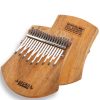
![[Kit Complet] Solid Walnut African Kalimba - 17 Notes The kalimba](https://thekalimba.com/wp-content/uploads/2022/05/The-kalimba--100x100.jpg)

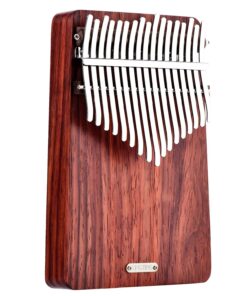

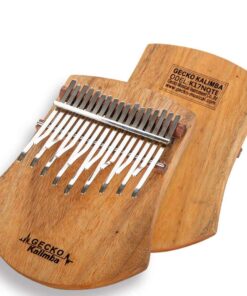
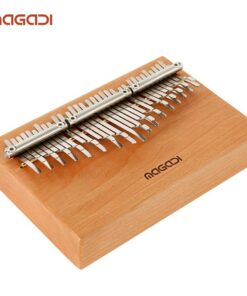
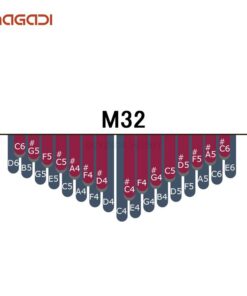
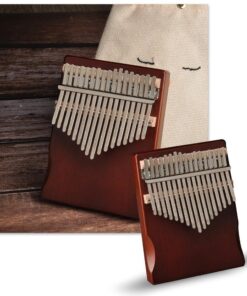

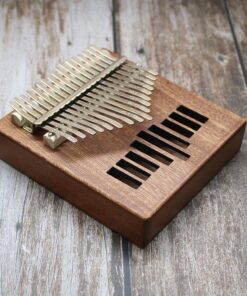
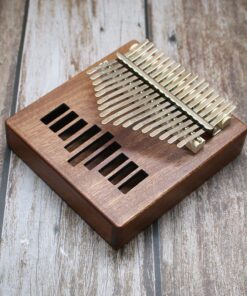
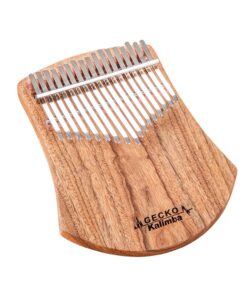
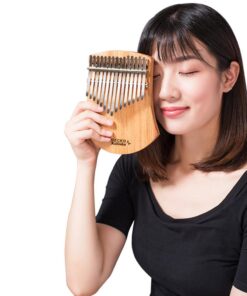
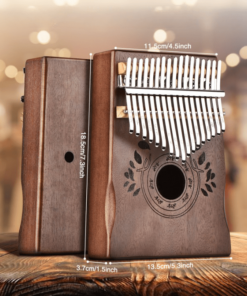
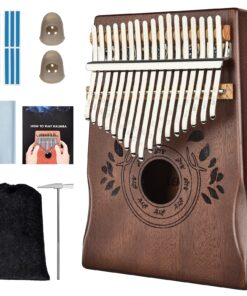
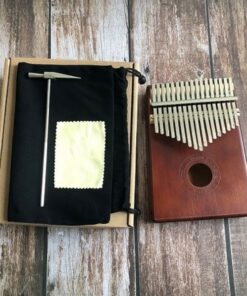

Reviews
There are no reviews yet.